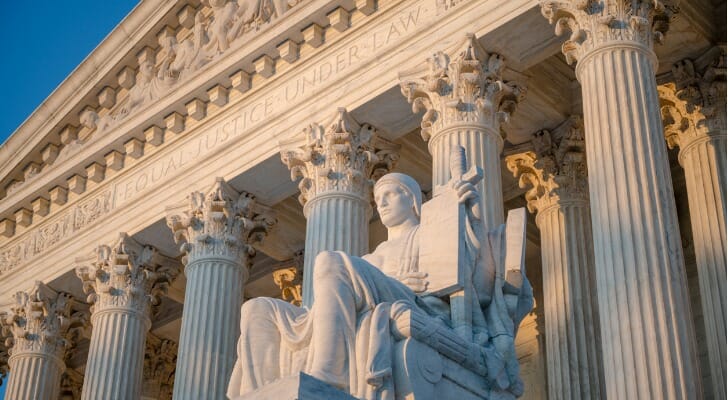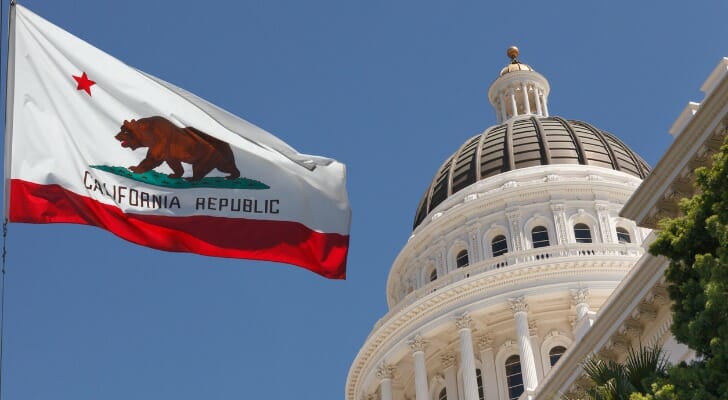 A state-run retirement plan for private workers in California will carry on after the U.S. Supreme Court declined to hear a lawsuit challenging the initiative, perhaps paving the way for more programs like it in other states.
A state-run retirement plan for private workers in California will carry on after the U.S. Supreme Court declined to hear a lawsuit challenging the initiative, perhaps paving the way for more programs like it in other states.
The nation’s highest court on Monday denied a petition filed by the Howard Jarvis Taxpayers Association seeking to prevent the $186 million CalSavers Retirement Savings Program from going forward. The initiative, which launched in 2019 and currently has 233,000 participants, automatically enrolls employees of private businesses that don’t offer employer-sponsored retirement plans in a state-run IRA.
A financial advisor can help you save and plan for retirement. Find a trusted advisor today.
What is CalSavers?

The CalSavers Retirement Savings Program is a payroll deduction IRA program created to help more workers in California save for retirement. Specifically, it enrolls eligible employees of private-sector businesses with five or more workers who don’t already have access to a workplace retirement plan. While eligible employees are automatically enrolled in the plan, participation is completely voluntary, meaning workers can opt out freely.
More than 30,000 employers have registered for the program since it launched on July 1, 2019, with participants saving $186 million, according to CalSavers Executive Director Katie Selenski.
Participants who don’t select their own investments have initial contributions automatically placed in a money market fund. After a period of 30 days, those contributions and future savings are invested in a CalSavers Target Retirement Fund, which allocates assets according to a person’s age and the year in which they plan to retire.
CalSavers Survives Legal Challenges
The Howard Jarvis Taxpayers Association, a California-based advocacy organization, kicked off the legal fight over CalSavers when it filed a federal lawsuit against the state in May 2018. The group, which filed the complaint in its capacity as a California employer, alleged the Employee Retirement Income Security Act of 1974 (ERISA) preempts the CalSavers program. As a result, the initiative should be voided, the group asserted.
“CalSavers must be reviewed for ERISA preemption because vested retirement funds are being automatically deducted from employee paychecks, yet the State disclaims all liability for the safety of those employee funds and has no base level of state funding to insure the security of employee funds,” HJTA alleged in its Supreme Court petition.
However, a federal district court judge previously ruled against the HJTA and granted the state’s motion to dismiss the case after finding that ERISA does not preempt the state-run program. The group subsequently appealed the ruling in February 2021, but the U.S. Court of Appeals for the Ninth Circuit upheld the lower court’s ruling and found that ERISA does not apply to the CalSavers initiative.
“We hold that the preemption challenge fails. CalSavers is not an ERISA plan because it is established and maintained by the State, not employers; it does not require employers to operate their own ERISA plans; and it does not have an impermissible reference to or connection with ERISA,” Circuit Court Judge Daniel A. Bress wrote in a May 2021 decision. “Nor does CalSavers interfere with ERISA’s core purposes. Accordingly, ERISA does not preempt the California law.”
California State Treasurer Fiona Ma, who chairs the CalSavers Retirement Savings Board, cheered the Supreme Court’s denial of the HJTA’s petition, saying it preserves the ability of millions of California workers to save for retirement.
“CalSavers is a simple solution to level the playing field for workers who for too long haven’t had effective access to retirement savings plans,” she said in a statement. “Without this program, and programs like it across the country, millions of Americans would be left behind.”
Why It Matters

The CalSavers program is one of a many state-run retirement plans that have launched in recent years. According to the Center for Retirement Initiatives at Georgetown University, there are 14 states and two cities that have enacted new programs for private sector workers, including Connecticut, Illinois, Oregon and California, whose auto-IRA programs are currently active. Colorado and Maryland are expected to launch their auto-IRA programs in 2022 while other states are in their planning phases, according to the CRI.
In fact, interest in state-run retirement options is even broader. Since 2012, 46 states have moved “to implement, study, or introduce legislation” to establish such programs. At least 22 states and cities introduced legislation last year to address the retirement savings gap that private workers face, according to the CRI.
Had the Supreme Court heard the case and struck down the CalSavers program, similar initiatives across the country could have faced similar legal challenges. The Supreme Court’s decision to not hear the case also ensures that eligible businesses with 50 or fewer employees must still comply with the June 30 registration deadline. Deadlines for larger businesses came and went in 2020 and 2021.
Bottom Line
The nation’s highest court declined to hear a taxpayer group’s lawsuit challenging California’s state-run retirement program for private employees with no access to a workplace plan. The Howard Jarvis Taxpayers Association unsuccessfully argued that the CalSavers program falls under the purview of ERISA and should be voided.
The program, which is part of a growing trend of state-sponsored retirement initiatives, automatically enrolls certain workers in the plan. Since its launch, CalSavers has grown to include 30,000 employees and more than 233,000 individual participants.
How to Save More for Retirement
- A financial advisor can help assess your budget and find more money to save for retirement. Finding a qualified financial advisor doesn’t have to be hard. SmartAsset’s free tool matches you with up to three financial advisors in your area, and you can interview your advisor matches at no cost to decide which one is right for you. If you’re ready to find an advisor who can help you achieve your financial goals, get started now.
- While obvious, delaying retirement can help you improve your financial prospects when you stop working. If you haven’t quite hit your savings goal, consider putting off retirement by another year or so. During that time you’ll continue to contribute to your 401(k) or IRA while reducing your longevity risk.
- If you’re 50 or older, consider making catchup contributions to your 401(k) or IRA. In 2022, the IRS allows you to contribute an extra $6,500 and $1,000 to your 401(k) and IRA, respectively, beyond the maximums for both accounts.
Photo credit: ©iStock.com/sharrocks, ©iStock.com/DustyPixel, ©iStock.com/shapecharge